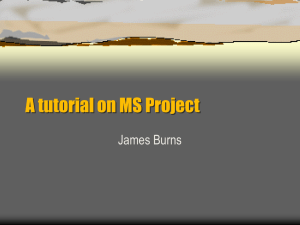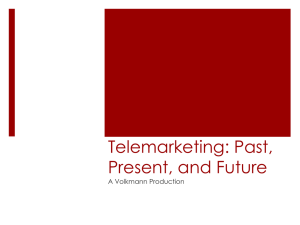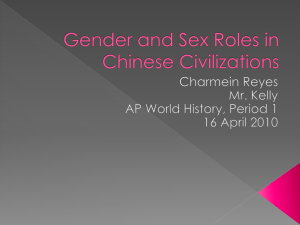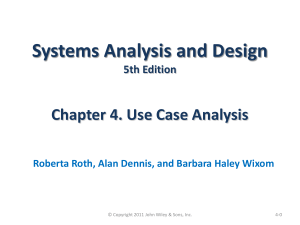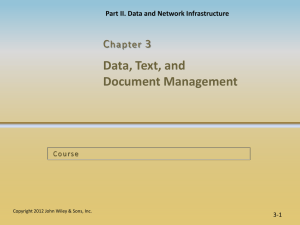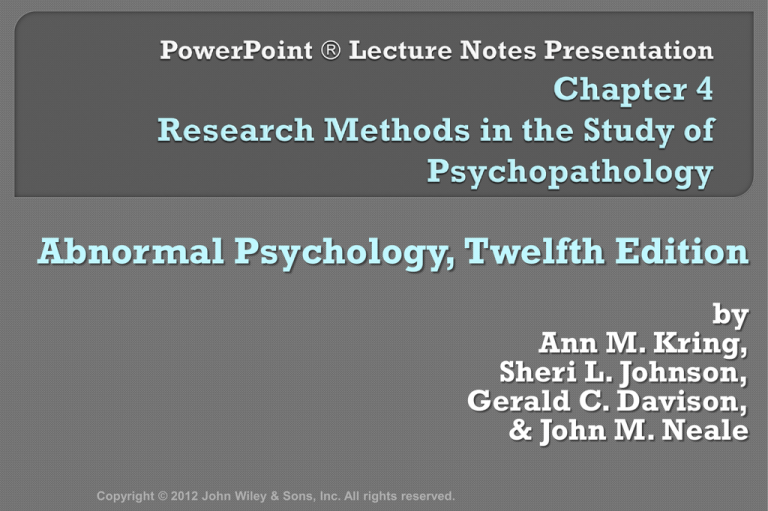
Abnormal Psychology, Twelfth Edition
by
Ann M. Kring,
Sheri L. Johnson,
Gerald C. Davison,
& John M. Neale
Copyright © 2012 John Wiley & Sons, Inc. All rights reserved.
Chapter
4: Research Methods in the Study of
Psychopathology
I. Science and Scientific Methods
II. Approaches to Research on Psychopathology
III. Integrating the Findings of Multiple Studies
© 2012 John Wiley & Sons, Inc. All rights reserved.
Science
= “to know”
• The systematic pursuit of knowledge through
observation
• Scientists gather data to test theories
Theory
• Set of propositions developed to explain what
is observed
A good theory is falsifiable
Allows for disconfirmation
Hypotheses
• Specific predictions about what will occur if a
theory is correct
© 2012 John Wiley & Sons, Inc. All rights reserved.
© 2012 John Wiley & Sons, Inc. All rights reserved.
Detailed biographical
description of an
individual
• Family history
• Medical status
• Educational and work
background
• Information about peer and
romantic relationships
• Personality and adjustment
issues
• Current difficulties and prior
experiences in therapy
Usefulness
• Rich description, especially
helpful for rare disorders
• Disprove hypothesis
• Generate hypotheses
Limitations
• Paradigm may influence
observations
• Cannot rule out alternative
explanations
• Cannot prove hypothesis
© 2012 John Wiley & Sons, Inc. All rights reserved.
Do
variable X and variable Y vary together?
• Are they related in a systematic way?
Do people who experience more stress have more
headaches?
Variables
measured but not manipulated
Cannot determine cause or effect
© 2012 John Wiley & Sons, Inc. All rights reserved.
© 2012 John Wiley & Sons, Inc. All rights reserved.
© 2012 John Wiley & Sons, Inc. All rights reserved.
Correlation Coefficient (r.)
• Varies from -1.0 to +1.0
e.g., -1.0, -0.65, -0.33, 0, +0.22, +0.70, +1.00
Strength
• The higher the absolute value, the stronger the relationship
(-0.9 > +0.6; +0.9 > -.08)
Direction
• Positive
Higher scores on Variable X associated with higher scores on Variable Y
• Negative
Higher scores on Variable X associated with lower scores on Variable Y
© 2012 John Wiley & Sons, Inc. All rights reserved.
© 2012 John Wiley & Sons, Inc. All rights reserved.
Statistical
significance
• Probability ≤ .05
• Can be influenced by number of participants
Larger samples increase likelihood of significance
Clinical
significance
• Is the association meaningful as well as statistically
significant?
© 2012 John Wiley & Sons, Inc. All rights reserved.
Correlation
does not imply causality
Directionality problem
• Variable X may cause Variable Y
• Variable Y may cause Variable X
Third-variable
problem
• Variable Z causes both Variable X and Variable Y
© 2012 John Wiley & Sons, Inc. All rights reserved.
Longitudinal
• Studies participants over time
• Examines whether causes are present before disorder
develops
• High-Risk Method
Include only those who are at greatest likelihood of developing a
disorder
Reduces the cost of longitudinal research
Cross-sectional
• Causes and effects measured at the same time
Confounds
• Third variable may produce changes in two correlated variables
© 2012 John Wiley & Sons, Inc. All rights reserved.
Epidemiology
• Study of the distribution of disorders in a population and
possible correlates
Three features of a disorder
• Prevalence
• Incidence
• Risk Factors
The National Comorbidity Survey–Replication
• Large-scale national survey
• Used structured interviews to collect information on the
prevalence of several diagnoses (Kessler et al., 2005).
© 2012 John Wiley & Sons, Inc. All rights reserved.
© 2012 John Wiley & Sons, Inc. All rights reserved.
Methods
to determine genetic
predisposition (concordance) to
psychopathology
• Family Method
• Twin Method
• Adoptees Method
© 2012 John Wiley & Sons, Inc. All rights reserved.
Family studies
• First-degree relatives (parents, children, siblings)
50% shared genes
• Second-degree relatives (aunts, uncles, grandparents)
25% shared genes
• Index cases/Probands
Sample of individuals with psychopathology
Twin studies
• Monozygotic (MZ) or identical twins
100% shared genes
• Dizygotic (DZ) or fraternal twins
50% shared genes
• Concordance
Co-occurrence or similarity of diagnosis
Adoption studies
• Study of adoptees who have biological parents with psychopathology
Cross-fostering
• Study of adoptees who have adoptive parents with psychopathology
© 2012 John Wiley & Sons, Inc. All rights reserved.
Association
studies
• Examine the relationship between a specific allele
and a trait or behavior in the population
Genome-wide
association studies (GWAS)
• Examines the entire genome of a large group of
people to identify variations between people
© 2012 John Wiley & Sons, Inc. All rights reserved.
Provides information about causal relationships
Involves:
• Random assignment
• Independent variable (manipulated variable)
• Dependent variable (measured variable)
Can evaluate treatment effectiveness
Experimental Effect
• Differences between groups
© 2012 John Wiley & Sons, Inc. All rights reserved.
The
investigator manipulates an independent
variable.
Participants are assigned to the conditions by
random assignment.
Researcher measures a dependent variable
that is expected to vary with conditions of the
independent variable.
Experimental effect
• Differences between conditions on the dependent
variable
© 2012 John Wiley & Sons, Inc. All rights reserved.
© 2012 John Wiley & Sons, Inc. All rights reserved.
Internal
validity
• Extent to which experimental effect is due to independent
variable
Control
Group
• Participants who do not receive treatment
• Standard against which treatment effectiveness is judged
External
validity
• Extent to which results generalize beyond the study
Would results apply to others besides the study participants?
© 2012 John Wiley & Sons, Inc. All rights reserved.
Research
designed to answer the question:
“Does treatment work?”
Empirically supported treatments
• Treatment Manuals
• Control Groups
Placebo
Double-blind procedure
• Sample Composition
Exclusion of diverse populations
• Efficacy and Effectiveness
• Need for dissemination
© 2012 John Wiley & Sons, Inc. All rights reserved.
© 2012 John Wiley & Sons, Inc. All rights reserved.
© 2012 John Wiley & Sons, Inc. All rights reserved.
© 2012 John Wiley & Sons, Inc. All rights reserved.
Experiments
not always possible in
psychopathology
• Ethical or practical constraints
Examine
lab
related or similar behavior in the
• Induce temporary symptoms
• Recruit participants with similarities to
diagnosable disorders
College students who tend to be anxious or depressed
• Animal research
© 2012 John Wiley & Sons, Inc. All rights reserved.
Examine how individual
participants respond to
changes in the
independent variable.
Reversal (ABAB) Design
• The reversal technique
not always possible
Initial state may not be
recoverable
© 2012 John Wiley & Sons, Inc. All rights reserved.
Meta-analysis
• Identify relevant studies
• Compute effect size
Transforms results to a
common scale
Smith et al. (1980)
• Meta-analyzed 475 outcome
studies
Involved 25,000 subjects
• Results: Psychotherapy is
effective
© 2012 John Wiley & Sons, Inc. All rights reserved.
© 2012 John Wiley & Sons, Inc. All rights reserved.
Copyright 2012 by John Wiley & Sons, Inc. All
rights reserved. No part of the material protected
by this copyright may be reproduced or utilized in
any form or by any means, electronic or
mechanical, including photocopying, recording
or by any information storage and retrieval
system, without written permission of the
copyright owner.
© 2012 John Wiley & Sons, Inc. All rights reserved.





